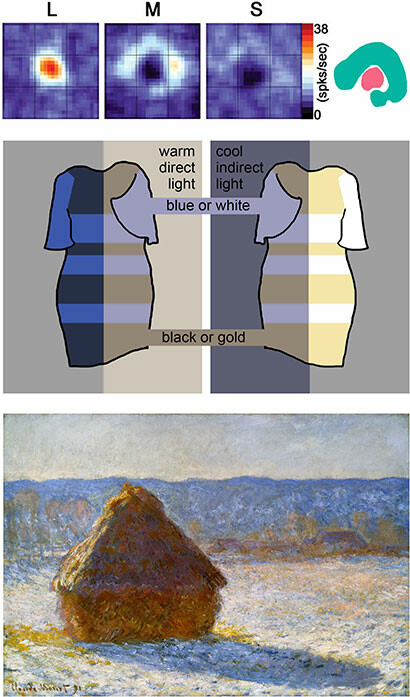
Study Indicates That Observing Authentic Artwork in Museums Substantially Boosts Brain Functionality in Contrast to Replicas

## Why Experiencing Art Live Engages the Brain More Than Replicas
Art lovers around the globe frequently embark on journeys to museums and galleries to behold their favorite works in person. Even though they might know these pieces from books, screens, or posters, being in front of the *original* fosters an entirely different and deeper bond. A recent revolutionary neurological study conducted in partnership with the **Mauritshuis Museum** in The Hague validates this sensation: experiencing art live activates the brain ten times more than observing a reproduction.
### Uncovering the Research
The Mauritshuis Museum—renowned for displaying Johannes Vermeer’s *Girl with a Pearl Earring*—was the backdrop for an insightful study. Researchers utilized state-of-the-art technology, like eye-tracking gear and MRI machines, to explore the brains of 20 volunteers aged 21 to 65. Participants engaged with both authentic artworks and their reproduced counterparts, such as posters or images viewed through goggles.
The results significantly overturned previous notions about art appreciation. The research indicated that the brain’s engagement with original pieces was exponentially greater—by a factor of 10—compared to its reaction to mere reproductions. As **Martine Gosselink**, the director of the Mauritshuis, mentioned to *The Guardian*, “A factor of ten is a massive difference […] You gain more when you experience things, consciously or unconsciously, because your brain establishes connections.”
### Conducting the Experiment
Participants were equipped with **electroencephalogram (EEG) brain monitors** and **eye-tracking technology** to record the electrical activity in their brains and the movement of their eyes while they viewed five meticulously chosen artworks in the museum alongside their reproductions. Included among the pieces assessed were Vermeer’s cherished *Girl with a Pearl Earring* and **Gerrit van Honthorst’s** *The Violin Player.*
What did they discover? The real artworks elicited a substantial positive reaction in the **precuneus**, a part of the brain responsible for *consciousness, self-examination, and memory.* This clear differentiation underscored how encountering authentic masterpieces promotes self-awareness and emotional involvement far beyond the reaction to replicas.
### The Importance of “The Girl with a Pearl Earring”
The study highlighted something particularly captivating about *Girl with a Pearl Earring*, which provoked the strongest response from the participants. Researchers identified a unique “sustained attention loop” created by the interplay of the subject’s left eye, her slightly open mouth, and the glimmering pearl earring. This dynamic draws viewers into a captivating cycle, prompting them to frequently shift their gaze among these three focal points.
In a statement regarding the findings, the museum noted that humans are instinctively inclined to focus on faces. When we view someone’s face, whether in a photograph or a work of art, our brain automatically attempts to interpret emotions—partly to gauge if there is any danger present. In this light, the composition of Vermeer’s artwork appears to trigger this instinct at an elevated level.
Moreover, the study suggests that the subtle ambiguity in *Girl with a Pearl Earring’s* expression may subconsciously encourage our brains to decipher the “riddle” of her thoughts or feelings. Conversely, pieces like *The Violin Player* elicited enjoyable reactions but at considerably lower levels—0.41 on a 1-point scale for the actual painting, compared to just 0.05 for the reproduction.
### The Importance of Experiencing Authentic Art
For years, art enthusiasts and curators have suspected that a crucial part of art appreciation lies in the immediacy, texture, and presence of genuine works within galleries. Now, with this study, we can affirm: the genuine experience of standing before a masterpiece enhances the mind in ways that static or digital reproductions simply cannot achieve.
While the visuals we find in books or on screens can be incredibly detailed, they fail to deliver the depth of experience our minds yearn for. Observing real-world artwork sustains our attention more deeply and establishes a more personal connection. The intricate brushstrokes, the careful blend of colors, and the unique textures generate cognitive involvement that no printed or pixel-based replica can imitate.
In a museum context, artworks exist within a palpable three-dimensional realm. Viewers can notice variations in lighting, the aging of time, stains from centuries of human activity, and even the faint scent of oil or canvas. Each of these combined sensory elements fosters an unmatched level of mental engagement.
### The Neurological Insight
Ultimately, this neurological study profoundly emphasizes just how remarkable museum visits can be. Direct engagement with art activates the **precuneus**, unlocking the potential for improved memory, personal reflection, and overall emotional depth. Furthermore, stimuli